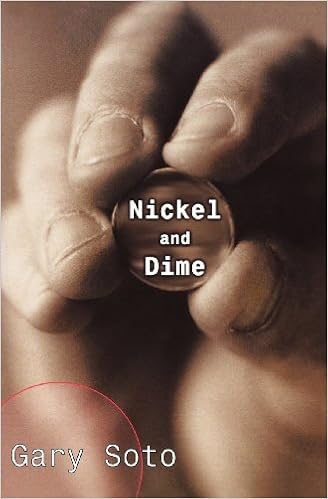Monday, June 23, 2008
On "Nickel and Dime" by Gary Soto ***
Not to be confused with Barbara Ehrenreich's book of a very similar name, Gary Soto's book is about a similar subject. But whereas Ehrenreich's book is nonfiction and is about trying to live on minimum wage, Soto's book is about trying to live on no wage. The book is really three interrelated novellas centering on three poor Mexican Americans in Northern California, two of them homeless. One, Roberto, shows up in all three stories. And it is perhaps Roberto that I lose sympathy for the most unfortunately. He's not the brightest individual and in the end he seems to become a clown, and it is the clown part that makes him seem more like a tool for laughter than a human being at times. Of course, perhaps this is part of what Soto is aiming for. In all three stories--and especially in the first two--the men at each story's center start out as individuals and slowly lose their sanity as they're pushed into the streets. What other role do such men have to play but that of the madman? They're homeless. Society treats each man as if their dire straits were their own fault. There's room in Soto's stories not to hold them completely blameless but there's also room to see how few allow themselves to care. (Roberto's own plight reminds me a bit, unfortunately, of one man I used to work with who also ended up homeless. As a former coworker, perhaps I should have taken him in, but the man was also a little strange, a little scary, and I was afraid, if he moved in, he'd never move out--after all, he didn't have to quit his job. Indeed, many of the homeless men's friends in these stories feel the same way, even after taking them in for short periods of time. This is what I mean by "allowing one's self to care"--it's not always that the people don't care, but that they fear the consequences if they show it.) I enjoy Soto's work in part because he invokes the California settings I grew up close to. His A Summer Life does for Fresno what he does for Berkeley and Oakland here, bringing these places to life. Still, for a bit-more-heartfelt portrayal of the urban poor, one might try something like L. Hancock's nonfiction Hands to Work, a heartrending account of three down-and-out women in New York City after welfare reform.
Subscribe to:
Post Comments (Atom)







No comments:
Post a Comment